Tarragon (Artemisia dracunculus) is a cherished herb known for its delicate, anise-like flavor and aromatic leaves that enhance a variety of culinary dishes, particularly in French cuisine. Whether grown in herb gardens, containers, or as part of a kitchen windowsill collection, tarragon rewards gardeners with lush, slender foliage and resilience to heat and drought once established.
However, one of the key aspects of successfully growing this flavorful herb is understanding its water needs. A common and important question many gardeners ask is:
How often should you water a tarragon plant?
In this comprehensive guide, we’ll uncover the watering habits of tarragon, explain the factors affecting its hydration needs, recognize signs of over- and underwatering, and share best practices to help you cultivate healthy, thriving tarragon at home.
Understanding Tarragon’s Natural Preferences
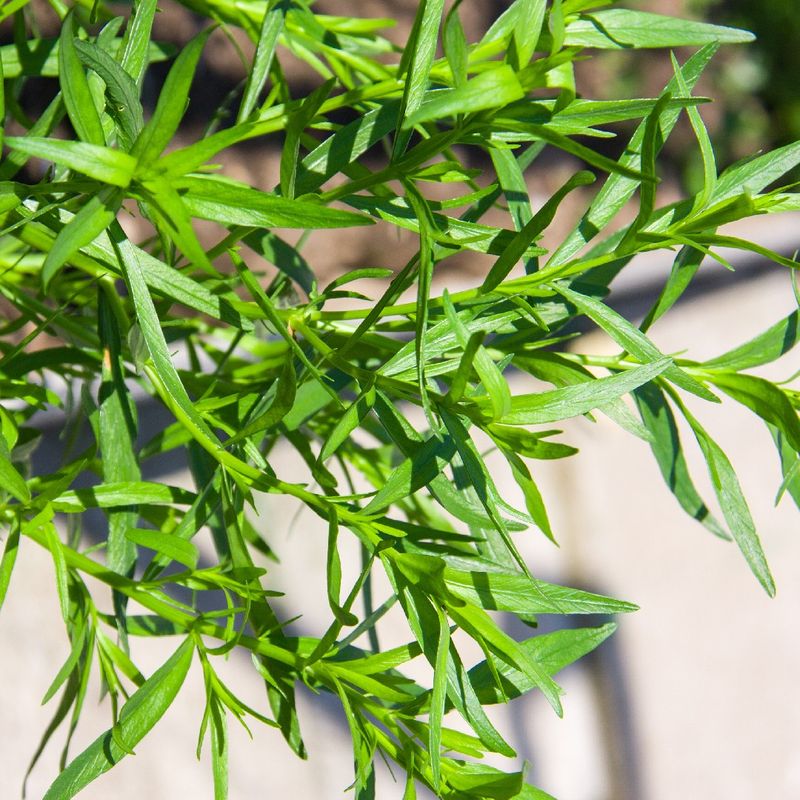
To appreciate how and when to water tarragon, it helps to know where it naturally thrives:
- Native habitat: Eurasia (French tarragon is a cultivated variety of Russian tarragon)
- Preferred conditions: Dry, sunny, and well-drained soils
- Drought tolerance: Moderate to high once established
Unlike thirsty herbs like basil or mint, tarragon prefers relatively dry conditions and dislikes soggy, compacted soil. Overwatering can quickly lead to root rot and other fungal problems.
How Often Should You Water a Tarragon Plant?
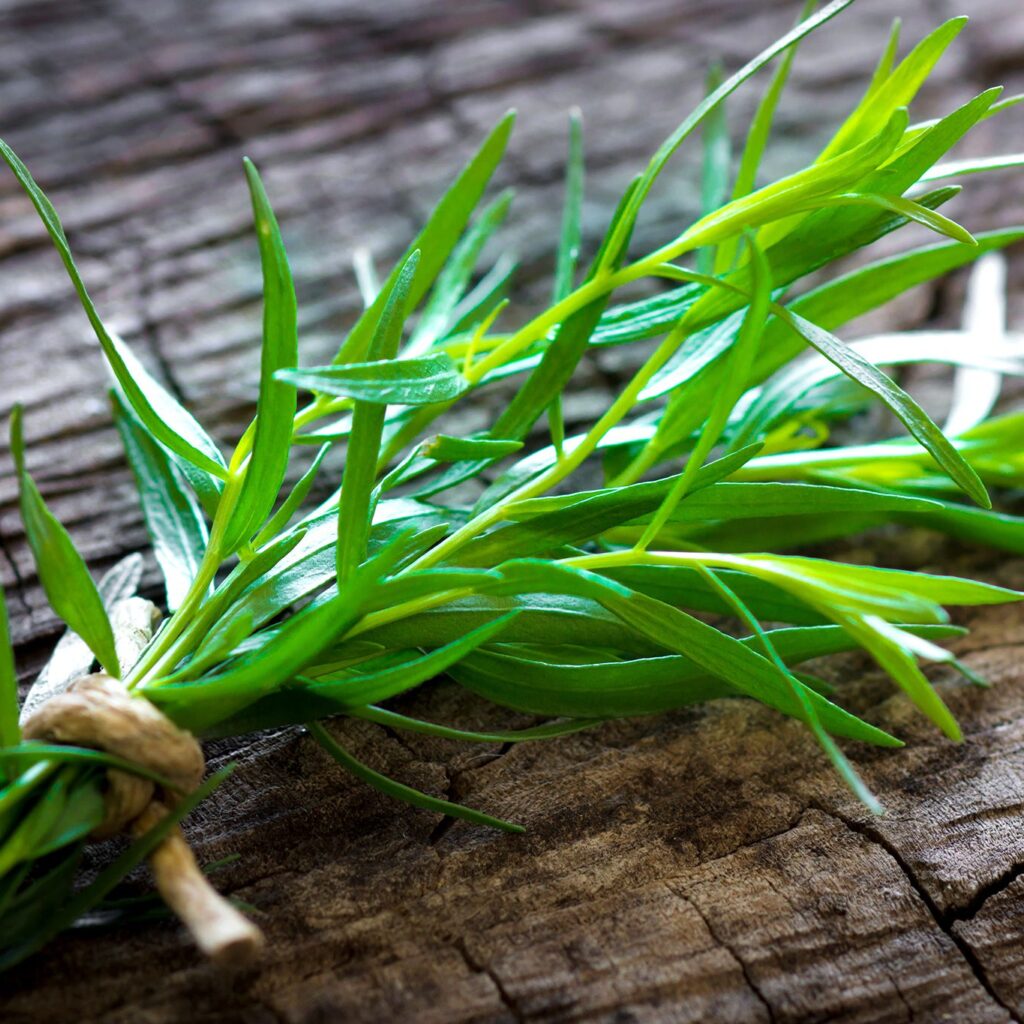
General Watering Guidelines
- Newly Planted Tarragon:
Water every 2–3 days for the first 2–3 weeks to help the roots settle and establish. - Established Tarragon (In-Ground):
Water every 7–10 days during warm, dry weather. In cool or humid climates, water every 10–14 days. - Potted Tarragon:
Water every 5–7 days in summer and every 10–14 days in cooler months, as containers tend to dry out faster than garden beds.
Golden Rule:
Let the top 1–2 inches of soil dry out completely between waterings.
Factors That Affect Tarragon’s Watering Needs
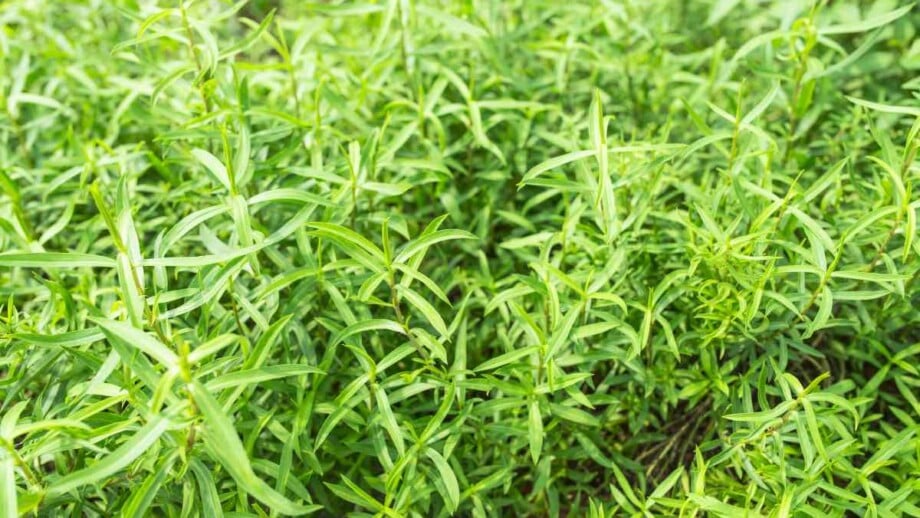
Several factors influence how often your tarragon plant should be watered:
Climate and Season
- Hot, dry summers increase water requirements due to faster soil evaporation.
- Cool, rainy, or humid conditions reduce the frequency of necessary watering.
Tip: Tarragon prefers arid conditions over consistently wet soil.
Soil Type and Drainage
- Well-draining sandy or loamy soils allow moisture to pass through quickly, which may require slightly more frequent watering.
- Clay or poorly drained soils retain water longer, increasing the risk of root rot.
Ideal soil: Light, sandy, or loamy soil amended with compost and coarse sand or grit for improved drainage.
Plant Age and Establishment
- Young tarragon plants have shallow root systems and require regular moisture until well-established.
- Mature plants are notably drought-tolerant and need far less frequent watering.
Sun Exposure
- Full sun (6–8 hours daily) encourages robust growth but accelerates soil drying.
- Partial shade slows evaporation and can reduce the plant’s watering needs.
Container vs. In-Ground Planting
- Container-grown tarragon dries out much faster due to air exposure around the pot and drainage holes.
- In-ground plants retain moisture longer in deeper soil.
How to Check If Tarragon Needs Water
Finger Test
Insert your finger about 1–2 inches into the soil:
- If it feels dry, it’s time to water.
- If it’s still moist, wait another day or two before checking again.
Soil Moisture Meter
Use a soil moisture meter to gauge hydration at the root zone. Water when the reading drops into the “dry” range.
Visual Cues
- Drooping, limp leaves typically indicate dehydration.
- Yellowing, soft, or mushy leaves suggest overwatering.
- Crisp, brown edges may mean prolonged dryness.
Best Watering Techniques for Tarragon
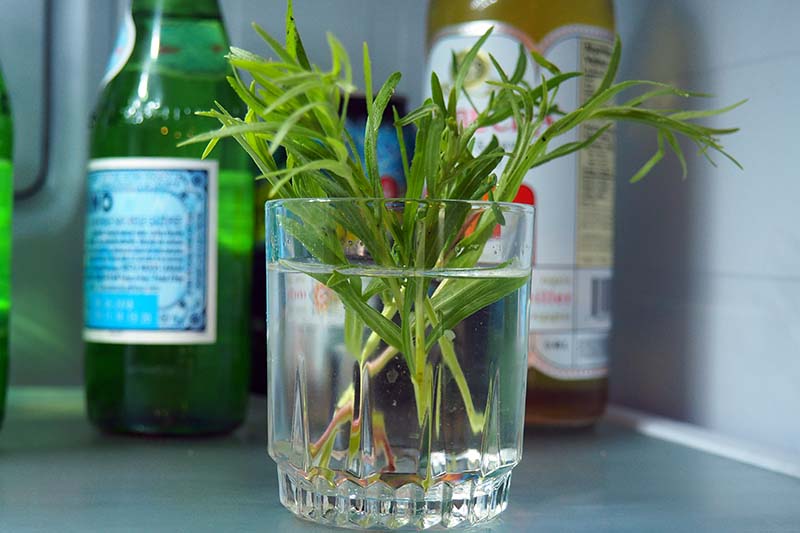
Deep, Infrequent Watering
Water deeply, ensuring moisture penetrates at least 6–8 inches into the soil. This promotes strong root growth and drought resistance.
Water at the Base
Always water directly at the soil level, avoiding wetting the leaves, which can encourage fungal issues like mildew.
Use Well-Draining Containers
For potted tarragon, use containers with multiple drainage holes and a light, sandy potting mix.
Morning Watering
Water early in the day to allow foliage and soil surfaces to dry before evening, reducing the risk of fungal infections.
Seasonal Watering Guide
| Season | In-Ground Tarragon | Potted Tarragon |
|---|---|---|
| Spring/Summer (Active growth) | Every 7–10 days | Every 5–7 days |
| Autumn/Winter (Dormancy) | Every 14–21 days (if no rain) | Every 10–14 days |
Signs of Overwatering and Underwatering
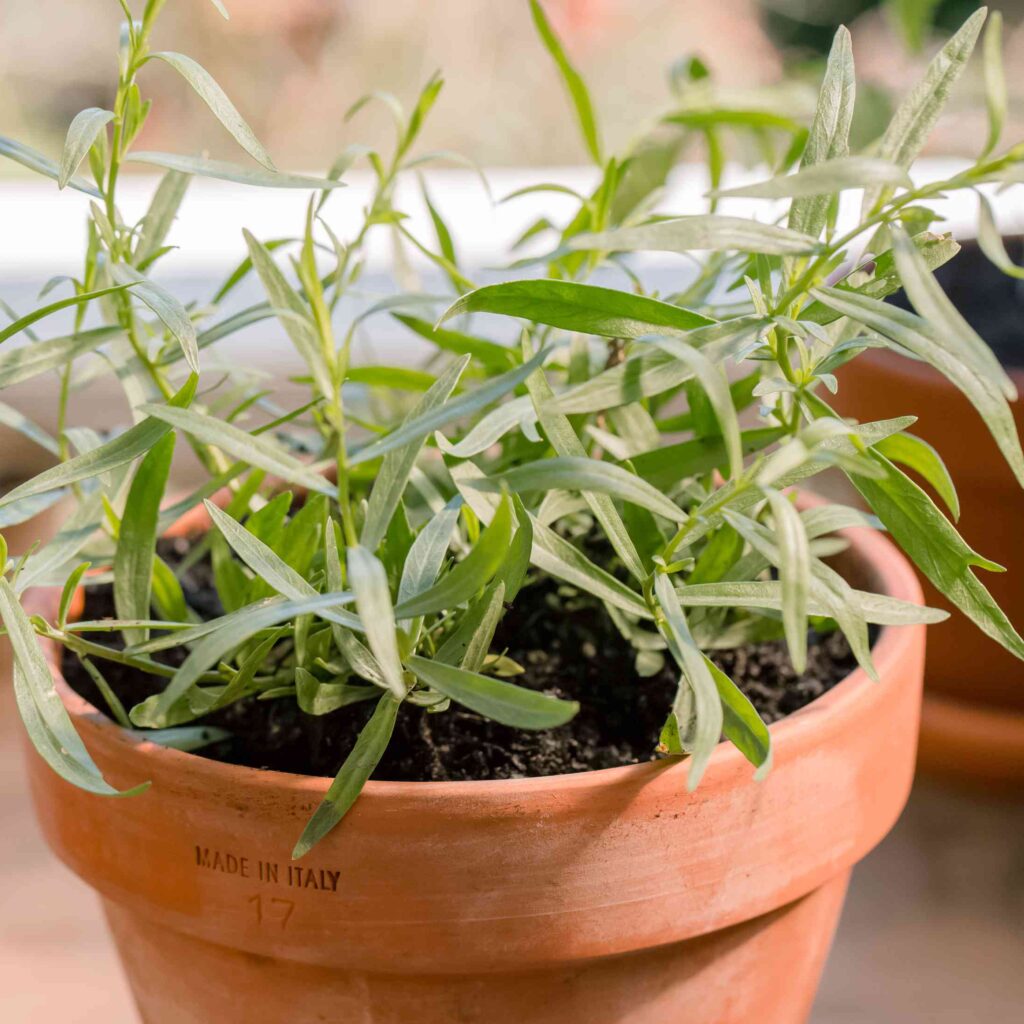
Overwatering Symptoms
- Yellowing, soft, wilting leaves
- Mushy, discolored stems
- Soggy, compacted soil with a sour smell
- Presence of mold or algae on soil surface
Solution:
Reduce watering, improve drainage, and remove any rotting plant material.
Underwatering Symptoms
- Drooping, dry, or brittle leaves
- Dry, cracked soil pulling away from pot edges
- Slow or stunted growth
Solution:
Water deeply, then monitor soil moisture more regularly during hot or windy periods.
Special Watering Tips for Tarragon
Mulch In-Ground Plants
Apply a light layer of gravel, coarse sand, or organic mulch (like pine bark) around the base of the plant to conserve soil moisture while ensuring good air circulation.
Avoid Watering on a Fixed Schedule
Adjust watering frequency according to soil dryness, weather patterns, and plant maturity.
Pair with Other Mediterranean Herbs
Tarragon thrives when planted with rosemary, thyme, sage, and oregano — all of which prefer similar watering conditions.
Prune Regularly
Regular pruning encourages bushy, dense growth and helps reduce water demand by improving air circulation around the plant.
Use Terracotta or Unglazed Pots for Containers
These materials wick excess moisture from the soil, reducing the risk of overwatering.
Common Watering Mistakes to Avoid
- Overwatering during cool or rainy weather
- Using dense, water-retentive soil in containers
- Letting water collect in trays or saucers beneath potted plants
- Watering overhead and wetting the foliage unnecessarily
- Neglecting container-grown tarragon during hot, windy periods
Conclusion
Tarragon is an easy-to-grow, drought-tolerant herb that rewards careful, moderate watering. While young plants require consistent moisture to establish their roots, mature tarragon prefers infrequent, deep watering and can endure dry spells once fully grown.
As a general rule:
- Water every 2–3 days when newly planted.
- Water every 7–10 days for established, in-ground plants in warm months.
- Water every 5–7 days for potted tarragon in summer, adjusting as needed.
Prioritize well-draining soil, avoid standing water, and let the top 1–2 inches of soil dry between waterings. By closely monitoring your plant’s cues and adapting to seasonal shifts, you’ll enjoy a healthy, fragrant tarragon plant perfect for culinary delights, herbal remedies, and ornamental borders.





